
Purpose This study was conducted to investigate the appropriateness of the concept of condition for athletes and to conceptualize condition in a way suitable for field and then to produce a tool to test condition that reflects usability. Methods 30 college athletes and national athletes with more than 5 years of experience were selected. In the conceptual review stage, the appropriateness of the concept of condition was verified. In the conditional element collection stage, the condition concept reflecting usability was extracted. In the development stage of the conditional questionnaire, a condition questionnaire was developed in consultation with the data provider to reflect usability. Results Previous studies on the condition of athletes were complicated and the necessity for consideration of usability was raised. As a result of conceptualization with consideration of the application to the sport scene, condition in a scene is summarized into both physical and psychological states. As a result of the appropriateness evaluation of the tool that produced the condition inspection tool reflecting the condition element based on universality and peculiarity of conditionality, the athletes evaluated that the condition inspection tool properly reflects condition, is easy to apply and can be used for condition control. Conclusion The development and application of psychological testing instruments reflecting usability will accelerate the application of sports psychology in the appropriate direction. The reflection of usability will contribute not only to the reliability and validity of the psychological testing tools used in the field of sports psychology, but also to the improvement of the possibility of intervention by leaders and athletes, the convenience of development procedures, and the utility of response results.

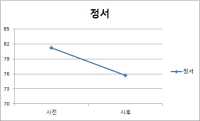
Purpose The purpose of this study was to examine the effects of positive psychological intervention program on mood state, self-esteem and happiness of university student athletes. Methods The participants were 10 university student athletes. The measures utilized the Profile of Mood States(POMS), self-esteem inventory and happiness questionnaire. Positive psychological intervention program was developed by previous studies, participants interview and expert discussion. The positive psychological intervention program were managing life, self-esteem enhancing program, being optimistic, positive emotion program, gratitude, forgiveness, communication skill training program, habit/routine making program and action strategy development. The data were analyzed by SPSS 20.0. Results These results were as followings. Firstly, positive psychological intervention program decreased total mood disturbance(TMD) of university student athlete. Secondly, positive psychological intervention program improved self-esteem of university student athletes. Lastly, positive psychological intervention program increased happiness level of university student athletes. Conclusion Training and education system should be established in which a positive psychological intervention program can be applied to university student athletes.

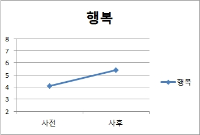
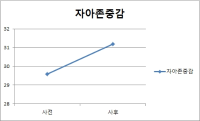

The purpose of this study was to confirm the differences between winner and loser groups of national team participated in the World Taekwondo Championships statistically and trends of psychological status according to applying mental coaching. In order to achieve the purpose it was the selection of 16 national members participated in the 2013 World Taekwondo Championships in Puebla. Data was selected by TOPS(test of performance strategy). The survey was conducted before and after applying the mental coaching and the game soon after. Data processing results were calculated utilizing Excel and SPSS 21.0 version. Based on the findings issue the conclusions were as follows. First, the psychological state of the winner and loser groups showed a different trend in the self-talk, emotion control, performed automatically, imagery, struggle, negative thinking, relaxation, condition factor. Winner group was shown maintenance or better trends of psychological state in the three times measurements on the other hand, loser group was shown decrease in the game soon after. Secondly, winner and loser groups are statistically significant differences in the psychological state of competition in self-talk, struggle, negative thinking, solving tension factors. In other words, The winner group had higher score in the four factors than loser group in the competition.

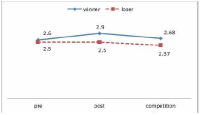
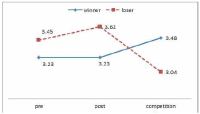
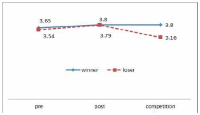
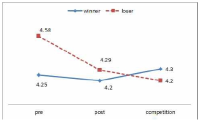
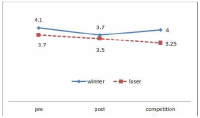
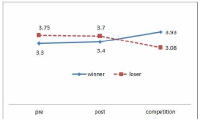
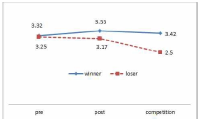
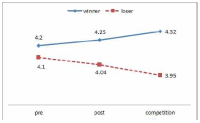
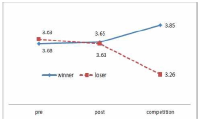
The purpose of this study was to describe psychological changes and variables of injured elite athletes during sport injury rehabilitation. 5 injured elite athletes were selected as participants, and open-ended questionnaires, participant observation, and in-depth interview were used for collecting data. Results from the data were analyzed through transcription, coding, and categorization with inductive method. To validate the results of this study, triangulation, in-depth description, member checks, and peer debriefing were used, and findings of this study were as follow. The participants showed negative psychological state such as fear of return to play and anxiety during the initial rehabilitation program, but their psychological state was changed positively such as recovery of confidence and desire of return to play at the end of program. However, the specific psychological changes of each participant showed several differences according to participant's surrounding environment and situation during the rehabilitation program. All findings have important implications for implementing and developing rehabilitation program, so needs to be investigated further.

[Purpose] This study was designed to explore Yuna Kim’s psychological strengths and the contextual factors, which led her to obtain the gold medal and the reflection of peak performance and preparation at the 2010 Olympics. It was hoped that by sharing the experience of one of the top athletes, other athletes would learn from her and prepare themselves better for Olympics in the future. [Methods] A case study method was applied with a qualitative approach. To obtain the purpose of the study, five in-depth interview sessions including introductory and member checking procedures were conducted. The interviews were recoded and transcribed verbatim, and content analysis was used to inductively analyse the data. [Results] The four general dimensions that were discovered in the results included Social-external Factors, Personal Traits, Coping Strategies, and Peak Performance. The social-external factors consisted of social support and attached/detached relationships while personal traits were personality traits, confidence and motivation. Coping strategies to overcome external and situational pressures were detached coping and resilience whereas peak performance was reflected on flow and the state of being mindful. [Conclusion] In conclusion, Yuna Kim’s strength was parallel with the previous research on the top athletes and other findings such as adaptive perfectionism and a sense of rivalry in the research were discussed.

PURPOSE Players’ nonverbal behavior during a game may be expressed through selfregulatory and intentional processes, where nonverbal cues are strategically used to achieve specific outcomes. This study aimed to observe and explore the strategic and intentional nonverbal behaviors utilized by table tennis players. METHODS The study utilized a grounded theory methodology and involved purposeful sampling of ten adult table tennis players. Semi-structured face-to-face interviews were conducted. The collected data were analyzed using open, axial, and selective coding techniques. RESULTS The findings revealed that players’ intentional nonverbal behaviors are influenced by their confidence levels, physical condition, and perceptions of others’ nonverbal cues. Throughout this process, players underwent various emotional experiences, worked to maintain a positive mental state, and experienced changes in both their behaviors and psychological states, which impacted the flow of the game. CONCLUSIONS This study’s results provide valuable insights into the role of intentional nonverbal behaviors utilized by athletes during competitions. This suggests that understanding and incorporating intentional nonverbal behavior should be a key consideration in sports psychology counseling and psychological skills training.
PURPOSE This study aimed to develop and implement a customized mental plan program to facilitate an optimal psychological state and peak performance among para shooting athletes. It also sought to empirically verify this program’s psychological effects by focusing on improvements in concentration, confidence, and relaxation. METHODS A total of six para shooting athletes who had earned medals in the Paralympic Games underwent six program sessions that were designed and implemented based on attention-related psychological factors identified through open-ended surveys and in-depth interviews. RESULTS The athletes’ attention was facilitated by task-focused behavior, breathing control, performance routines, and physical condition management. Meanwhile, their concentration was hindered by task-irrelevant thoughts, negative physical states, and external distractions. These factors were further categorized according to competition phase: the day before, precompetition, and during competition. Based on the statistical analysis, significant improvements were observed in the athletes’ concentration, confidence, and relaxation. CONCLUSIONS The custom program was practically effective as an intervention for psychological skills tailored to experienced para shooting athletes’ individual needs. The findings offer valuable insights for developing strategies supporting the psychological states of athletes in disabled sports.
PURPOSE This study aimed to investigate the effects of COVID-19 on elite youth athletes by investigating their activities and eating habits before and after the COVID-19 pandemic. METHODS This study included 917 elite adult athletes from 19 sports and were grouped into 6. The questionnaire included items regarding demographics, physical activity, sleep, and eating habits before and after COVID-19. A total of 44 questions requiring subjective short answers were included. Statistical significance was set at p< 0.05. RESULTS After COVID-19, vigorous and moderate activity decreased across all sports; however, light activity increased in almost sports. Time spent sitting increased across all sports. The difference in the number of meals consumed varied among sports, and the number of competitions decreased in all sports. CONCLUSIONS The COVID-19 pandemic appears to be finished but has not ended yet. Athletes must determine the best way to maintain their physical, physiological, and psychological states close to their original abilities. Determining this will provide the greatest impact on the return of athletes after COVID-19; this study will be helpful.
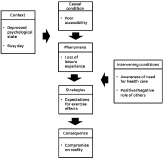
Purpose The purpose of this study is to investigate the alienation and the overcoming process of the physical activity participation of people with Adventitious Visual Impairment(AVI) Methods 21 Adults with AVI were recruited and one on one semi-structured interview was conducted. Ground theory was used to analyze the data. Member check, peer debriefing was conducted to enhance the trustworthiness of this study. Results As a result, a total of 203 concepts were derived. This consisted of 21 subcategories and the common themes of the subcategories were categorized into nine categories. Specific results are as follows. First, the physical activity of people with AVI was directly affected by the sports facilities, physical activity programs, and professional instructor. This causal condition resulted in the loss of leisure experience in the context of the busy daily life and the depressed psychological state. Second, due to the perceived need of health care and the positive involvement of others, people with AVI came to expect the effect of exercise. Third, people with AVI participated in physical activity again as a tool to achieve the purpose of health improvement. This type of physical activity has a limitation that it can not guarantee the continuity of physical activity due to the limitation that it does not contain autonomy and interest of people with AVI. Conclusions Based on these results, the following suggestions were made. First, it is necessary to improve the environment for ensuring participation in physical activity of people with AVI. Moreover education and promotion of the effects and values of the exercise should be carried out for people with AVI and their guardians. Second, it is necessary to diversify physical activity types and reconstruct existing exercise programs.
